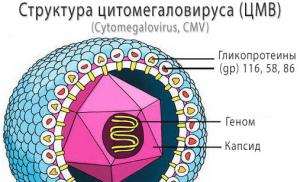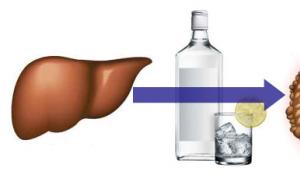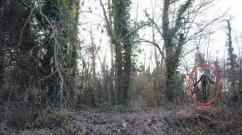Pinia. Choosing seed material
Italian pine- or, pinia. A coniferous evergreen plant of the Pine family.
origin of name
Pinia - comes from Latin word"pinus", which literally translates as "pine", Italian - in the place of the original habitat, from Madera to the Black Sea coast.
Description
Pinia grows up to 30-40 meters in its 400-500 years of life and its straight, even trunk is crowned with a crown in the form of a tent or a huge umbrella - this is the most recognizable pine. In adult trees, the branches grow almost horizontally, they have needles up to 12-15 cm long, collected in a bunch of two needles, bright green in color, not changing color throughout the year. It gained its popularity not only for decorative look, but, above all, for the fruit-nuts, which ripen by the end of the third year in cones. Cones, as a rule, grow singly, rarely 2-3 together, reach 15 cm and have an ellipsoidal, or almost round shape. Inside the cones are seeds that, after ripening, fall from open cones in the spring, and the opened cones themselves can remain on the tree for another 2-3 years. Seeds, up to 17 mm in size, Brown, edible and very much appreciated since ancient times, even when the Roman legionaries took these nutritious oblong seeds with them on their journeys. Pine seeds - pinoles, are considered the largest among all coniferous plants, so they are 4 times larger than cedar, and the yield is up to 8 tons per hectare of industrial Pine plantings, while there are up to 1450-1500 seeds per 1 kg.
reproduction
Pinia propagates by seeds. This is a very laborious process, since the quills are first subjected to a three-month stratification, then planted in specially prepared soil. Young seedlings are very tender and whimsical, therefore they often die if they do not receive proper attention and care.
growing conditions
Since the Mediterranean coast is the birthplace of growth, it prefers sandy soils and humid climate subtropics, but due to its endurance and adaptability, it is able to grow on different soils, including dry limestones. Like all conifers, a strong and resistant tree is already in adulthood. Handles straight lines well. Sun rays, moderate drought and a short-term decrease in temperature to minus levels - -18oC. It is susceptible to diseases and pests, therefore, in industrial plantations, it requires constant care and protection. It grows well both outdoors in warm climates and outdoors in tubs in the summer in cooler climates, where it is brought indoors for the winter. In youth, it has a cone-shaped crown and is therefore considered a highly ornamental plant used in Lately in greenhouses and winter gardens.
Application
It has been known in culture for more than 2000 years, has been used by man since ancient times, so the Etruscans grew Pinia in their gardens, now it is widely used in landscape gardening, and in young age in the art of bonsai. Like any coniferous plant, it has many useful properties for humans. The most important are its seeds, eaten both raw and in culinary production, in particular, in the preparation of pesto sauce, in Spanish and Italian cuisine, in the preparation of meat and delicacies. The second most important is its aroma, which exudes resin and tree bark, which is bactericidal and kills pathogenic bacteria. In Italy and Spain, industrial plantations are used to extract raw materials from which high-quality wood for the furniture industry, rosin, and turpentine are produced.
The well-known fairy tale by A. Tolstoy “Pinocchio” is a retelling of the Italian fairy tale about Pinocchio, which was made by Carlo from a pine log. In the episode where the beard of Karabas Barabas sticks to a resinous tree, it is just about Pinia, and the cones that Pinocchio threw at him were from this tree. The famous Italians Botticelli and Boccaccio in their artistic and literary works depict and describe Pinia (Botticelli's illustrations for Boccaccio's Decameron).
One more salient feature of this coniferous tree - edible seeds, similar in taste to pine nuts and having large quantity healthy oil in its composition. No less interesting is the hybrid of Italian and Korean pine, which is called the Korean cedar - it has longer needles and high-value wood.
Pine Italian pine (pinus pinea)
Italian pine pine (pinus pinea) occurs naturally on the Mediterranean coast from the Iberian Peninsula to Asia Minor. A tree 25-30 m high with a low-branched, highly debranched trunk, with a rather beautiful dense, closed, umbrella-shaped crown with a rounded or semi-rounded contour, almost flat in adulthood.
The trunks of old trees are reddish-gray, with long, furrowed, strongly flaky bark, separated by large plates. The trunk is often strongly curved and branches into several strong branches at a low height. The bark of young trees is light grey. Young shoots are initially gray-green or light yellow to yellow-brown, glabrous, densely foliated. The buds are located at the ends of the shoots and are covered with light brown scales with an unevenly serrated edge, sharply ovate, 6-12 mm long, non-resinous. Renal scales with a curved apex, oblong, brown, with a silvery fringe along the edges.
As you can see in the photo, the Italian pine needles are 10-15 cm long, 1.2-2 mm wide, dark green, sometimes bluish, hard, dense, sticking out, rough:

The needles are pointed, sometimes slightly twisted from above, slightly serrate along the edges, from dark to gray-green, with 12 very thin longitudinal stomatal stripes above and 6 stomatal lines below, sitting rather loosely.
Lives for over 500 years. The breed is photophilous, drought-resistant, undemanding to soils, grows on dry limestones and coastal sea sands, does not tolerate excessive moisture. Wind resistant though constant wind in one direction it turns the shape of the crown into an elongated one, but in general does not affect the development of the tree. One of the features is very large oily seeds, like those of the Siberian cedar, which are edible and even sold as pine nuts, are considered a delicacy and are used to prepare various dishes of traditional Italian cuisine.
The wood is very strong and durable, contains little resin, so it is readily used for making stairs, windows, doors, and furniture. Since ancient times in Rome and southern Italy, pine trees have been planted along roadsides and alleys to provide shade. The tree is extremely decorative with its original flat crown. On the this moment widely used as a beautiful park tree, most spectacular when planting individual trees or in small groups in open areas.
Valuable decorative and "nut-bearing" tree. It is widely cultivated on the southern coast of the Crimea and in the Caucasus, there are large-seeded, thin-barked forms.
Light permeable compost soil is suitable for growing Italian pine. Young plants require an annual transplant, adult plants are transplanted as needed.
Italian pine (pinus pinea) has several dwarf forms:
Pinus mugo- has a compact form and grows very slowly.
Variety Winter Gold- a dwarf plant, its needles turn yellow for the winter.
Cedar elfin Pinus pumila Globe- grows very slowly.
When the soil dries out, shedding of needles is possible, it is very difficult to save such a plant. Move it to a cooler area and water it regularly. If the needles are yellower at the bottom, but the plant itself is growing, then this may be due to insufficient lighting, too plentiful top dressing, excessive soil moisture.
Hybrid of Italian pine and Korean pine (pinus koraiensis)


Hybrid of Italian pine and Korean pine or Korean cedar (pinus coraiensis). Large beautiful tree up to 40 m high and 1.5 m in diameter. The bark is thick, grayish-brown, fissured. The crown is wide cone-shaped, low lowered, often multi-topped. The branches are strong, outstretched, rising at the ends. In contrast to the Siberian cedar pine, it has longer (up to 20 cm), needles less often located on shoots, large (up to 2 cm) buds and weaker pubescence, through which a greenish shoot is visible. The needles are bluish-green, with white stomatal lines on the sides, finely serrated along the edge, 7-15 cm long, falls off after 2-4 years. Young shoots are densely pubescent with red hairs.
Sexual maturity occurs from 20-30 years, in plantations - from 60-120 years. Reproductive ability is preserved until old age. Lives up to 500-600 years.
Pollination occurs in June, cones ripen in September-October, they are ovoid-cylindrical, 7-17 cm long and 5-9 cm thick, yellowish-brown, with a strongly elongated and bent back navel of the apophysis.
Falling to the ground, the cones open and release the seeds - pine nuts. The seeds are large, up to 17 mm long and 12 mm thick, round-wedge-shaped, faceted, with a very strong seed coat. The mass of 1,000 seeds reaches 500 g. The seeds of the Korean pine are about two times larger than the seeds of the Siberian pine. The Korean cedar is propagated by seeds. The first decades it grows slowly, and from 30-50 years old, the growth increases markedly.
The hybrid is cold-resistant, winter-hardy, at a young age it is very shade-tolerant and even needs shading. From the age of 10-15, his need for illumination increases significantly. Mesophyte and mesotroph.
It almost does not form pure plantations, it grows in a mixture with other conifers and broad-leaved species, being the dominant of the first tier of forests of the middle and low mountains of the Sikhote-Alin and the ridges of the left bank of the river. Amur.
The wood is highly valued for its even texture and color. Stumps, branches, bark, roots, needles are processed. But the most valuable product is seeds, which are used as food and as raw materials processed into various confectionery products. Pine nut oil is widely used in the food industry, medicine, and optical instrumentation. The skin of the seeds gives the color. Decorative, stable in an urban environment.
Today, many people have the idea to plant coniferous trees in their homes. Ornamental leafy plants are a wonderful decoration for the interior, but they can not be compared with the charming Italian pine. It can be seen on sale under the name pine. She is found in flower shops. all year round, however, it is best to purchase and plant it in early spring.
Growth in nature
Italian pine is found on canary islands. Very effective young tree has a pyramidal shape. The crown branches out with age. Due to the powerful branches, the crown of the umbrella is formed. In home cultivation, flower growers often use this feature to create an amazing bonsai garden, unique and unrepeatable.
At home, the Italian pine reaches a huge size, 20 meters in height. In pots, this plant is usually no more than one and a half meters, but it is not suitable for a small room. But in a large hall, it will look just magical. Its bark has a reddish-gray tint, which gives the pine a very decorative look. The needles of young trees are soft, silver-green. The length of each needle is about 10-12 cm. Over time, it becomes more rigid and darker. In nature, the Italian pine periodically sheds needles, which then cover the ground around the tree with a carpet. At home, old needles are cut off on their own, which stimulates the growth of fresh ones.
Why Pine
Indeed, in nature there is so much that just the eyes run wide. In addition, to date, ornamental varieties and hybrids have been bred. But among them, Italian pine occupies a special place. Distinctive feature- an unforgettable coniferous aroma, surprisingly persistent. Many pines are grown in the summer in the garden, and in the winter they are brought to the insulated loggia. By Christmas, you will have your own "tree" at home that you can decorate. This tradition allows you to save Christmas trees in wildlife.

Description of the species
Let's take a closer look at what Italian pine (pine) is. The tree is slightly branched, highly delimbed, with a beautiful crown. The trunks are covered with furrowed bark, which is separated by large plates, strongly curved. Young shoots are usually gray-green or light yellow, densely covered with needles. The buds at the ends are quite spectacular, non-resinous. The length of the needles is 10-15 cm, green or bluish. Mature female cones are solitary, symmetrical. The shields of the scales are curved, thick, and hide the edible seeds, which we call nuts. It is from them that a new tree can be grown.
View Properties
Italian pine, or pine, is a resident of the Mediterranean, so it can hardly endure frosts. V middle lane and in the south of Russia it can grow in open ground (where frosts do not exceed -20), but in Siberia it will not survive. Here, gardeners usually plant it in tubs in order to take it to a warmer room with the onset of autumn. Prefers dry and loose soils, mostly sandy. The breed is photophilous and drought-resistant, undemanding to growing conditions, except that it does not tolerate waterlogging. The tree produces large seeds resembling nucleoli. They are considered a delicacy and are regularly eaten. Beneficial features do not yield to fruit Siberian cedar. This is a longevity product.

Sapling or seeds?
It is most convenient to use a five-year-old seedling of the type you like. In this case, you get a fully grown plant that can be placed on your suburban area. However, many are not interested in how to buy a finished seedling, but how to grow it. Italian pine (pinia) grows long enough, be patient. Growing a tree from cones is a very interesting process, this technology has great importance recovery coniferous forests, and not only to decorate a private household plot.
Choosing seed material
We will talk in detail about how to plant Italian pine seeds. First of all, you need a mature cone. To do this, she will have to live on a tree for three years. After that, her scales open and expose the seeds. Right now, the finished cone falls to the ground, where it can be harvested and used to grow a new plant. About 10 seeds live in each such house. Optimal time for harvesting - the end of October.
Having brought it home, it must be placed in heat, on the stove or on the battery. After a couple of days, the cone will open and give you the opportunity to collect the seeds. In nature, they undergo natural stratification. All winter the cone lies under the snow, and with the onset of spring, the seeds are saturated with moisture and germinate. This should be repeated at home. To do this, spread the seeds on the sand, slightly moisten, cover with snow on top and put them on the bottom shelf of the refrigerator.

With the onset of spring
Seeds can now be placed in planting boxes. They need to be filled with light peat soil (one part of turf, peat and sand), which will definitely need to be calcined in the oven. After the soil has been prepared, seeds are sown to a depth of 2-3 cm. Water well and cover with glass. After the emergence of seedlings, the covering material must be removed, and the box should be moved to a sunny place. For prevention, seedlings are sprayed with a fungicide solution. In early summer they can be planted in open ground or tub if climatic conditions do not involve growing on the site.
plant care
Now you have a young Italian pine (pinia) growing. Growing features suggest a regular transplant, about once every five years. By this age, they reach a height of about half a meter. It must be remembered that young pines need to be covered on winter period spruce branches. In the warm season, you will need to feed the seedlings 2-3 times. To do this, you need to use mineral mixtures for coniferous trees. But with organic matter it is better to be careful, pines do not like fatty soils. Under these conditions, you can get a sufficient number of seedlings for decoration garden plot from one bump.
By about 7 years, the plant acquires a crown, and by 20 the tree is covered with branches almost to the ground. By the age of 30, the lower branches begin to die off, the crown acquires an ovoid shape. By this time, the maturation process is almost over, although growth will continue.

Pinia in the winter garden
According to the reviews of those who have the described tree on their site, this is one of the few pines that easily tolerates home content. Moreover, it will have a satisfactory condition and shape if the tree is in the fresh air during the period of growth. And in winter it is best to keep it in a cool place where growth stops.
The soil should be light, it is a mixture of granulate and sand, as well as gravel. The earth must be replaced every 2-3 years. Young plants require moderate watering, and in winter you can observe the temporary dryness of the substrate.
crown formation
What needs to be done so that you have a beautiful and strong Italian pine (pinia)? The use of modern synthetic fertilizers is not encouraged; forest humus will be quite enough. This variety of pine is great for creating a flat and wide crown, but other styles can be realized if desired. The final height should be maintained at a level of one and a half meters. Young shoots are shortened and molded with a wire. This should be done while the branches are young and flexible, that is, before they reach the age of three. In those places where the wire passes, it is necessary to remove the needles. Make sure that it does not fit tightly to the branches, otherwise it may grow into the bark.

delicious nuts
In addition to the decorative function, you can count on the fact that from about the 12th year of life, the pine tree will begin to bear fruit. One tree produces an average of 45 cones. A large plant can produce approximately 7-9 kilograms of edible seeds. Many Italian dishes use the delicious pine nuts. The Italian pine is a very fertile plant. If several trees grow on the site, then you will be provided with a wonderful food supplement. The calorie content is quite high, about 630 kcal per 100 g of product. Nuts are rich in trace elements such as vitamins B, E and C, as well as phosphorus and magnesium, zinc and potassium, manganese and iron.
Beneficial features
To date, they have not been fully studied, but it is well known that Italian pine nuts perfectly heal wounds and help to cope with diseases. gastrointestinal tract. Regular consumption of pine fruits helps to strengthen the immune system and has a slight diuretic effect, improves the activity of the kidneys and liver, stimulates potency, and contributes to the normalization of the heart.

Our pine nuts Siberian pine similar to the nuts of the Italian pine (pinia) Pinus pinea L. This coniferous species has many climatypes: Portuguese pine (Pinus pinea lusitanica), Italian pine (P. P. tarentiana Manetti), Cretan pine (P. P. cretica Endl.), Anatolian pine (P. P. anatolica). Italian pine, like other coniferous pine families, is a source of resin and turpentine essential oil, but above all, like other cedar pines, delicious cedar seeds (nuts) and fatty oil from them.
4. Italian pine (pinia)
Pinus pinea L. - Italian pine, or pine (from Latin pinea - walnut). This light-loving, drought-resistant and fast-growing tree, called in its homeland - the Mediterranean countries, cedar pine, reaches a height of 15-20 (30) m with a trunk diameter of 1-1.5 m. Pinia grows in the Mediterranean from the seaside strip to a height of 1000 m in the mountains (on the Iberian Peninsula and in Asia Minor - up to 400-600 m). Under favorable conditions, the life expectancy of pine trees can be 500 years or more. The unpretentiousness of the pine tree to the soil, as well as its ability to tolerate short-term frosts down to -18˚ C, made it possible to introduce this beautiful coniferous culture far beyond its natural growth. Pine is cultivated on Black Sea coast Crimea and the Caucasus, in the western part of North Africa, in Ireland, England (up to Scotland), South Africa, America, China, Japan.
Young Italian pines have a dense rounded crown, with age it takes on an umbrella-shaped shape, which persists until the old age of the trees. Mature trees, standing apart, in open unshaded areas, have a developed spherical crown. The bark is thick, dark reddish or grayish-brown, cracked, peeling off in large thin plates. Kidneys 0.6-1.2 cm long, cylindrical, pointed, non-resinous, with long fringed scales along the edge. Needles 10-15 (20) cm long, dark green, sharply rough, sitting in 2 pieces. in bunches at the ends of the shoots; fall off in the 2nd or 3rd year. Root system with tap root, well branched. The wood of the tree is low-resinous and has a white or yellowish-reddish color. Due to its lightness (its density is 0.521-0.773) and strength, Italian pine wood is valued as a building material, ship plating, and is also used for the manufacture of carved products. This type of cedar pine, unlike the Siberian cedar pine, grows faster and begins to bear fruit from the age of 12. 
Pine cones are very resinous, have a spherical or ovoid shape, are located 1, less often 2-3 pieces, at the top of the shoots, they are larger in comparison with the Siberian pine cone and reach a length of 8-15 cm and a width of 7-15 cm, shiny, light brown, ripen in the 2-3rd year. A bountiful harvest of cones occurs every three years. The scales of the cone are hard and woody, with large 5-6-angled hemispherical swollen scutes, easily separated from the axial core of the mature cone. 25-year-old pine trees growing on the Black Sea coast produce up to 43 cones. The yield of seeds from one tree is 6-7 kg. In the Mediterranean, 1 hectare of Italian pine, which has entered the time of full seed production, is able to produce 60-70 m3 of cones or 200 kg of seeds.
The seeds of the Spanish cedar pine - pinioli nuts - are the largest among all pine nuts (there are 1200-1500 of them in 1 kg), they are twice as large as the seeds of the Siberian pine and, unlike the latter, are more elongated. Quite often, pine seeds reach a length of 2 cm or more. Some seeds have a narrow and underdeveloped wing (4-8 mm), which easily falls off. Pine seeds ripen 2-3 years after pollination. The seed shell is thick, covered with a dark brown coloring pigment on the outside, which is easily erased, staining the hands red-brown. The de-pigmented shell has a pastel yellow-brown color. The kernel (endosperm) is white, oily. The taste of pinioli also resembles the seeds of Siberian pine, but unlike them, they have a slight resinous flavor and a more delicate texture. Debu K., describing the fatty cedar oil, which has long been obtained in Siberia from the seeds of the Siberian pine, pointed to its limited production, to the fact that the peeling of cedar seeds is carried out by day laborers with their teeth. The shell walls of the pine nut are much thicker and harder than those of the Siberian cedar seed, so it would be much more difficult to peel pine seeds in such a “manual” way ... In fairness, it should be noted that in artificial plantings in order to obtain cones and cedar seeds, preference is still given the form of pine with thin-walled seeds - Pinus pinea f. fragilishort.
The main suppliers of pine seeds are now the following countries: Spain, Portugal, Italy, Tunisia and Turkey.
Author's digression. Italian cedar pine, like some other types of pines, is often used, for example, in Spain for landscaping city streets and park recreation areas. In some parks in Barcelona, where the trees have already reached fruitful age, in autumn, under a cedar pine, you can easily find an unshelled cone, despite the presence in the city of large parrots, magpies and other seed-loving birds. This fact aroused our special interest, since in St. Petersburg, where neither nutcrackers nor parrots live, it was difficult to find a whole cone of Siberian pine. We entered into competition with the crows, who in a matter of minutes completely pecked at the cone that had fallen to the ground. We encountered a similar situation in the Moscow region, only here the main competitors in collecting cones were squirrels, who cut the cone to the ground, while, unlike crows, they did not wait for it to fall, but plucked the cone from the tree.
 The absence of traces of peeled pine cones on the ground under the trees and the abundance of full, unshelled ones, including last year's ones, made us take a closer look at them. Unripe pine cones on the tree do not have gaps between the scales. Ripening on the tree and drying up, the cone opens, the seeds fall out of it, while the empty cone can still hang for 2-3 years before falling to the ground. A similar thing happens with prematurely fallen cones, drying up, their scales rise and diverge, facilitating access to seeds for small rodents. We noticed that in cones lying on the ground, along with separate empty nests, in some there are seeds located unnaturally - they are wedged between the large scales of the cone as if they tried to pull the seeds out of their nests, but unsuccessfully - they were warped and stuck, even with fingers it was very difficult to move such seeds from their place. It is possible that it is difficult for birds to peck at a whole pine cone and they simply pull out the most conveniently located large seeds from the nests. Past experience of peeling Siberian pine cones made it possible to feel the difference between the cones of these types of pines. Thus, it was easier to extract seeds from a pine cone by successively breaking off its tougher and thicker scales as a whole, starting from the base of the cone and moving towards the top. It was not possible to disassemble a Siberian pine cone in the same way as a pine cone. In fallen cones of Siberian pine, the scales are thinner and more brittle, their upper outer parts easily break off, revealing the seeds hidden under them. It is much easier for birds to extract seeds from such a cone, and it is apparently more difficult to cope with the tougher and thicker scales of the cone and the shell of pine pine seeds ... Large cones that have fallen for the winter act as a haven for a number of species of insects that quickly occupy free places in it. So, having collected several large cones of various types of pines in the second half of September in one of the botanical gardens in Barcelona, in just a couple of days, we were forced to get rid of them. After the cones began to open in the warmth, various insects began to creep out of them in abundance, including those that looked like our ticks.
The absence of traces of peeled pine cones on the ground under the trees and the abundance of full, unshelled ones, including last year's ones, made us take a closer look at them. Unripe pine cones on the tree do not have gaps between the scales. Ripening on the tree and drying up, the cone opens, the seeds fall out of it, while the empty cone can still hang for 2-3 years before falling to the ground. A similar thing happens with prematurely fallen cones, drying up, their scales rise and diverge, facilitating access to seeds for small rodents. We noticed that in cones lying on the ground, along with separate empty nests, in some there are seeds located unnaturally - they are wedged between the large scales of the cone as if they tried to pull the seeds out of their nests, but unsuccessfully - they were warped and stuck, even with fingers it was very difficult to move such seeds from their place. It is possible that it is difficult for birds to peck at a whole pine cone and they simply pull out the most conveniently located large seeds from the nests. Past experience of peeling Siberian pine cones made it possible to feel the difference between the cones of these types of pines. Thus, it was easier to extract seeds from a pine cone by successively breaking off its tougher and thicker scales as a whole, starting from the base of the cone and moving towards the top. It was not possible to disassemble a Siberian pine cone in the same way as a pine cone. In fallen cones of Siberian pine, the scales are thinner and more brittle, their upper outer parts easily break off, revealing the seeds hidden under them. It is much easier for birds to extract seeds from such a cone, and it is apparently more difficult to cope with the tougher and thicker scales of the cone and the shell of pine pine seeds ... Large cones that have fallen for the winter act as a haven for a number of species of insects that quickly occupy free places in it. So, having collected several large cones of various types of pines in the second half of September in one of the botanical gardens in Barcelona, in just a couple of days, we were forced to get rid of them. After the cones began to open in the warmth, various insects began to creep out of them in abundance, including those that looked like our ticks.
In ancient times, along with edible chestnuts, pine nuts, pine nuts were the main food of the locals. Now they are included in many Spanish and Italian fine dining. In the same Spain, it is easy to find shelled pine seeds for sale in size and shape that are characteristically different from our cedar seeds. There is evidence that pine nuts were used by the Etruscans at the beginning of the 1st millennium BC. e. In Greece already in 200 BC. e. pine seeds were exported. In England, at the sites of Roman military camps, the remains of pine shells were found in garbage heaps, which indicates the inclusion of cedar seeds in the Romans' camping diet. Now the main suppliers of pine nuts to the European market are Spain, Italy and Turkey.
 Among the most important microelements in pine seeds were found: potassium, phosphorus, magnesium, and from macroelements: iron, zinc, manganese. The energy value pine seeds 583 kcal / 100g.
Among the most important microelements in pine seeds were found: potassium, phosphorus, magnesium, and from macroelements: iron, zinc, manganese. The energy value pine seeds 583 kcal / 100g.
Rich in protein (31.6-40.6%), oil (45-50%), sugars (5.15%), vitamins: B 1 (thiamine) 1.50 mg / 100 g, B 2 (riboflavin) 0, 28mg/100g, C (ascorbic acid) 2.50mg/100g pine nuts are used as a folk remedy for beriberi, indigestion and colds as an emollient.
Amasiatsi A. (XV century) wrote that pine nuts help with nervous trembling and relaxation, and are useful for coughing and asthma. They help with burning during urination and bladder ulcers, with pain in the lower back and trembling in the body, sciatic nerve disease and weakness of the lungs. Pine nuts increase semen excretion, and the use of seeds with honey not only enhances potency, but also cleanses the bladder and kidneys of stones and sand. If you eat them with dried figs, dates or vinegar honey, then "dissolve the bladder stone and help with scorpion stings." And if you boil the shell and rinse with its decoction, then “they will remove the mucus and help with toothache [pain].” Pine fumigation is useful for eyelash loss. A decoction of pine needles helps with diseases of the liver and stomach.
Avicenna (X century) recommended pine nuts boiled in sweet wine to cleanse the lungs of pus. Avicenna warned that pine nuts are difficult to digest, but nourish strongly and plentifully, the use of pine nuts in in large numbers causes cramps in the intestines.
It has been established that due to the high content of linoleic acid in pine seeds, eating them reduces the risk of coronary disease hearts.
Fallen needles, accumulated for years at the foot of a tree, create favorable conditions for the growth and development of mycelium, for example, such useful mushroom, like a gray row (serushka), very appreciated in the countries of growth.
Methods and indications for the use of pine nuts and pine shells are in many ways similar to the methods and indications used by traditional medicine. different countries with respect to the seeds of other cedar pines, for example, Siberian pine, Korean pine, etc.
In particular, the ingestion of alcohol infusion of pine seeds ground with shell has shown its effectiveness in relieving back pain and osteochondrosis. To prepare the infusion, purified water, alcohol, honey and nuts are used, all ingredients in equal parts. The nuts are crushed together with the shell and poured with warm boiled water, the resulting mixture is infused for 4-5 days in a warm and dark place. Then, alcohol is added to the container, mixed and aged for another 3-4 weeks (21-28 days). After that, the solution is filtered, squeezed, and honey is added to the resulting infusion. After aging for another 4-5 days, the ready-to-drink drink is poured into dark glass bottles, tightly corked and stored in a dark place. During storage, stratification of the infusion can occur - cedar oil floats up, and resinous components and sediment accumulate at the bottom. The infusion is used three times a day, for 10-15 minutes. before meals, one tablespoon.
Analogues of these pines can be found on other continents. For example, two more closely related species: cedar pine - P. cembroides Zucc. and edible pine - P. edulis Engelm. can be found: the first - in the mountains of Northern Mexico, and the second - in the southern states of the USA: Colorado, Arizona, New Mexico. These trees, reaching a height of 6-10 m, produce large seeds (up to 1.5 cm), whose kernels are rich in oil (oil content 58-62%), they are tasty and widely eaten by the local population, these nuts are sold under the name mexicaan pifion - Mexican pinoli.
Air-dried pine seeds contain: oil (45-50%), protein (31.8%), sugars (6%), water (6%), licitic-phosphoric acid (0.05%), ash (4.4% ), vitamin B, etc. .
The fatty oil obtained by pressing pine seed kernels contains a mixture of liquid fatty acids (94.5%) and a mixture of solid fatty acids (5.5%). From liquid fatty acids, oleic (51-57% of their total) and linoleic (43-49%) prevail, and from solid ones palmitic (92%) and stearic (8%).
Polyunsaturated fatty acids (88.01%): linoleic (47.28%), oleic (36.56%). Saturated fatty acids: palmitic (6.67%), stearic, lignoceric. In addition, pine seed oil contains cis-5-olefinic acid (2.24%).
The composition of the unsaponifiable fraction of the oil includes sitosterol and a number of trace elements. Of the vitamins contained in the oil, a high content of tocopherols was recorded: α-tocopherol (15.34), γ-tocopherol (1.681), δ-tocopherol (41.87), which makes pine oil a valuable source of antioxidants.
Fatty oil, depending on the variety, can be used as a food or as a technical one. Refined food grade oil has a light yellow color, pleasant taste and almost no smell. Technical grades are suitable for the manufacture of varnishes and paints.
The needles contain ascorbic acid (0.69%), essential oil.
Essential oil obtained in the Nikitsky Botanical Garden in June 1923 by Kondratsky A.P. from pine, had a yield of 0.027%. The resulting sample of essential oil was analyzed by B. N. Rutovsky and I. V. Vinogradova, they determined the following oil constants: density d 20 / 4 0.8878; refractive index n 20 / D 1.4842; solubility in 90 º alcohol 1:2. Goryaev M.I. also refers to the same data.
Based on the similarity of the purposes of using all cedar pines and, in particular, pine, in urban landscaping, it can be assumed that essential oil from pine needles has antiseptic, bactericidal and bacteriostatic, deodorizing, repellent, fungistatic and fungicidal effects.
Heated pine wood exudes a pleasant smell, thanks to the resin contained in it - resin. Pine resin is valued above many other pine resins in its smell. So, even a contemporary of Avicenna - Beruni noted that the resin of the pine tree - "zift" was often used as a full-fledged substitute for the resin of the turpentine tree, as well as for falsifying incense.
In industrial volumes, resin is extracted by tapping trees, which are to be cut down in the next 3-4 years. Fresh resin contains turpentine or turpentine oil (16-18.5%) and rosin.
The composition of turpentine oil (gum turpentine) includes l-limonene (75.4-80%) l-pinene (16.7%) and others. Density of turpentine oil d 24/4 0.8393; n 23 / D 1, 4733.
Pine turpentine oil has an antiseptic, diuretic, local irritant and anthelmintic effect. It is used in the treatment of infections of the kidneys and bladder, and in rubbing and in steam baths in the treatment of rheumatic conditions. In addition, these uses of turpentine oil are effective in the treatment of diseases. respiratory system, in particular such as coughs, colds, flu and tuberculosis. Externally, it is used, for example, in the form of ointments, compresses, herbal baths for the treatment of skin problems, wounds, ulcers, burns, boils, etc. .
The fact that turpentine was extracted from the resin (“zift”) of coniferous trees, including pines, was pointed out by Dioscorides (I century). There were at least two ways to obtain turpentine oil or "Zift oil":
When boiling resin in water, turpentine floats to the surface, from where it was collected with the help of wool;
Gum (“zift”) was boiled in a vat of water, over which a woolen rag was hung, and when it was moistened from rising vapors, it was squeezed into a separate vessel.
It was believed that the best oil was obtained in the second way, and Avicenna also emphasized this. In this way, as a result of boiling zift, two products were obtained: zift oil (turpentine or turpentine oil) and dry zift (rosin), which were part of many medicines.
Theophrastus (4th century BC) noted that if zift is boiled together with olive wood, it does not freeze.
Rosin was also actively used at that time as a protective coating for ships, because of its ability to withstand sea water.
Pineic acid predominates in the composition of Italian pine rosin.
In addition, since ancient times, the temperature treatment of wood of pine, juniper, etc. without access to oxygen (pyrolysis) produced thick, with a strong smell of wood resin - "kitran", or tar. According to Dioscorides, this resin has the power to "corrode and dismember living bodies, preserving dead bodies", and if the kitran gets on something, then "its traces are stable and almost never come off", it "spoils clothes and skin." Kitran has also been used for healing. For example, juniper kitran was used in the treatment of scabies and to soften the skin, and wild olive kitran, although it treats scabies, makes the skin rough and causes cracks. Oil was made from kitran, as well as from zift, and the remainder was a thick or even dry and brittle substance - a low-grade resin called "dakal".
Ink was made from the soot of pine wood and one third of gum arabic in ancient times.
Interesting fact. The prototype of the literary hero A. Tolstoy Pinocchio - Pinocchio, in whose name the Italian author of the fairy tale Carlo Collodi (1881) reflected the name softwood wood, which served as the material for its manufacture. Italian pine in those days was often used to make carved toys.
Literature.
1. Trees and shrubs of the USSR, vol. 1, M.-L., 1949.
2. Vasiliev A. V. Flora of trees and shrubs of the subtropics of Western Georgia. pp. 5-207. Proceedings of the Sukhumi Botanical Garden. Issue. 8. Sukhumi: 1955.
3. Kolesnikov A. I., Eristavi R. R. Italian pine is a valuable tree species for forestry and green building of the Georgian SSR. pp. 201-226. On Sat. ABLOS: Proceedings of the Abkhaz Research Forest Experimental Station. Issue. 2. M.: Lesnaya prom-st, 1966.
4. Wehmer C. Die Pflanzenstoffe. Zweiter Auflage, Jena; Erster Band, Page 27, 1929; Zweiter Band, Page 1301, 1931.
5. Useful plants of the USSR. T1. M.-L.: Ed. USSR Academy of Sciences, 1951.
6. Gildemeister E., Hoffmann Fr. Die atherischen öle. Band IV. Berlin: Akademie-Verlag, 1956.
7. Grieve. A Modern Herbal. Penguin, 1984.
8. Kondratsky A.P. Data on the yield of essential oils from some plants of the Russian flora. pp. 90-96. On Sat. Proceedings of the Scientific Chemical-Pharmaceutical Institute. Issue. 10. About Russian essential oils. Sat.2. M.: 1924.
9. Rutovsky B. N., Vinogradova I. V. Constants of some Crimean and Caucasian essential oils. pp. 88-89. On Sat. Proceedings of the Scientific Chemical-Pharmaceutical Institute. Issue. 10. About Russian essential oils. Sat.2. M.: 1924.
10. Goryaev M.I. Essential oils flora of the USSR. Alma-Ata: Academy of Sciences of the Kazakh SSR, 1952.
© Fedotov S.V. August 2010. Photo by the author
Pinus pinea listen)) is a tree of the pine family.It occurs naturally along the Mediterranean coast from the Iberian Peninsula to Asia Minor. A tree 20-30 meters high, lives up to 500 years. The crown is dense, dark green, umbrella-shaped, compact, in old trees with horizontally spread branches. Needles in bunches of two, long (10-15 centimeters), narrow, dense, green throughout the year, sometimes bluish. Very beautiful tree ornamental plant used by the Etruscans. Nowadays, it is also widely used in this capacity. Very good for bonsai art. Cones are usually solitary or 2-3 pieces, 8-15 centimeters long, ovoid or almost spherical. Seeds ripen in the third year in October, but the cones do not open until the following spring. After the seeds fall out, the cones hang on the branches for another 2-3 years.
Seeds oblong-ovoid, dark brown, sometimes with light spots, with three ribs. Length - 15-17 millimeters, width - 8-9. With a thick shell, narrow short wing. Edible. Pine seeds are the largest among pines (and pines in general), they are 3-4 times larger than cedars. There are 1500 of them in one kilogram. The yield is quite high - from three to eight tons of seeds are obtained from one hectare. In Italy, pine seeds are called pineoli.
A grove of pine trees near Ravenna in a painting by Botticelli (c. 1483), illustrating the 3rd episode of the story "History of Nastagio degli Onesti".

Pine in the street of Rome.

Literature
- Big encyclopedia in 62 volumes. Volume 36. "Terra". Moscow. - ISBN 5-273-00432-2
- Klimenko Z.K. Exotic plants of the Southshore. - "Business-Inform", 1999
- Abu Ali Ibn Sina (Avicenna). Canon of Medicine
Notes
Links
Wikimedia Foundation. 2010 .
Synonyms:See what "Pinia" is in other dictionaries:
- (lat.). Type of pine, Italian cedar, co edible fruits. See prev. sl. Dictionary foreign words included in the Russian language. Chudinov, A.N., 1910. Pinia, a species of Italian pine; tall straight tree with a round crown (cap) at the top. Full … Dictionary of foreign words of the Russian language
Pinia- on top of Palatine Hill next to the Forum. Rome, Italy. Pinia (Italian pine), tree (pine family). Along the banks mediterranean sea. A characteristic element of the Mediterranean landscape; cultivated for its edible seeds (so... ... Illustrated Encyclopedic Dictionary
Italian pine, pinna Dictionary of Russian synonyms. pine tree n., number of synonyms: 5 tree (618) ... Synonym dictionary
- (Italian pine), tree (pine family). Along the shores of the Mediterranean. A characteristic element of the Mediterranean landscape; cultivated for its edible seeds (so-called pinioli nuts) and as an ornamental plant... Modern Encyclopedia
- (Italian pine) tree of the pine family. Along the shores of the Mediterranean, on the Black Sea coast of the Crimea and the Caucasus. Pine fruits (pinioli) are edible ... Big Encyclopedic Dictionary
PINIA, pine, female. (from lat. pinus pine) (bot.). An umbrella-shaped coniferous tree growing in the Mediterranean region, Ch. arr. in Italy, Italian pine. Explanatory Dictionary of Ushakov. D.N. Ushakov. 1935 1940 ... Explanatory Dictionary of Ushakov
I 1. A tree of the pine family with a characteristic umbrella-shaped crown, reddish-brown bark and dark green needles; Italian pine. 2. The wood of such a tree. II well. A column of gases and ash rising above the crater of a volcano during an eruption, ... ... Modern Dictionary Russian language Efremova
AND; well. [ital. pigna] 1. Coniferous tree with an umbrella-shaped crown and edible fruits; Italian pine. 2. A column of gases and ash above the crater of an erupting volcano, resembling the crown of this tree. * * * Pine (Italian pine), a tree of the … encyclopedic Dictionary
pine- italinė pušis statusas T sritis vardynas apibrėžtis Pušinių šeimos medieninis, dekoratyvinis augalas (Pinus pinea), paplitęs pietvakarių Azijoje, pietų Europoje. Jo seklos valgomos. atitikmenys: lot. Pinus pinea English. Italian stone pine; parasol… … Lithuanian dictionary (lietuvių žodynas)













